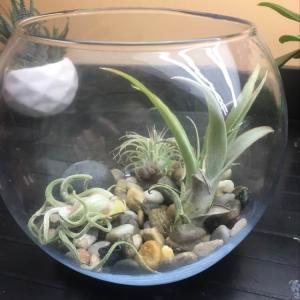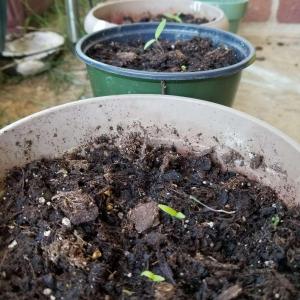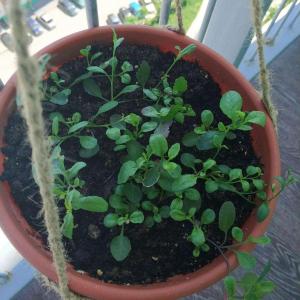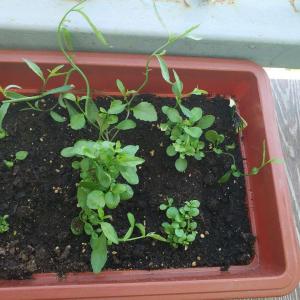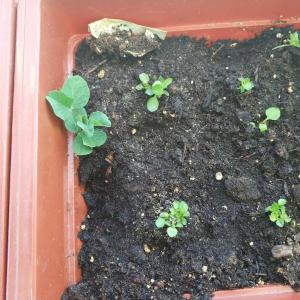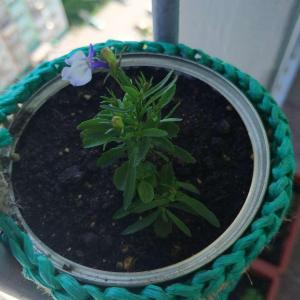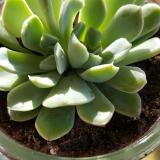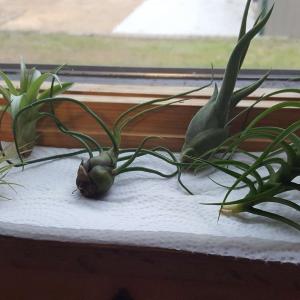文章
Dummer. ゛☀
2017年07月01日

Bottle grass
Any of various plants of the genus Rhododendron
Bottle grass origin
Marsh native to North America; distributed in coastal areas of the Atlantic.
Bottle grass; morphological characteristics
Sarracenia plants are perennial herbs, rhizomes creeping, with many fibrous roots; leaf rosette foliage leaf radicals, bottle shape, horn shaped or tubular, the pitcher has a ampulla, cystic wall opening is smooth, and the secretion of nectar, sweet nectar, to lure insects to come and fall into the bag in the wall smooth, containing digestive juice, can secrete digestive enzymes of insects will decompose, and then composed of parenchyma cell wall glands decomposition of protein enzymes to be absorbed; in addition, bottle grass sword shaped leaves in the autumn and winter of this insect, leaves without capsule, only through photosynthesis to make nutrient.
Sarracenia flowers bisexual flower inflorescence, extracted from the leaf base, loose racemes of large flowers, by several flower group, flower core by 1 hooded stigma, 3 ~ 5 ovary chambers and 50 to 80 stamens, yellow green or dark red, sepals 5, petals below the. The fruit is a capsule with many small seeds that automatically crack and eject seeds at maturity.
No matter which one species of Sarracenia, can be divided into 3~5 regions of its bottle shaped tube: the first area is the second area is the bottle, lip and bottle, three or four district (some species together) and fifth (only the five Sarracenia purpurea) is the main body of the bottle. Some areas have specific features, in line with the characteristics of their morphology on.
Zone 1
Bottle cap: most types of lids cover parts of the bottle, avoiding excessive rainfall and filling the bottle, resulting in less prey. The bottle will be combined with the color, smell, unripe hair, mouth to lure prey. Some special types, such as a small bottle of grass and grass parrot bottle cap, which is very close to the mouth of the bottle, the bottle is inlaid with a small piece of a small lacking chlorophyll region, forming a semi transparent "windows", flying insects will attempt to pass through the bottle, and then into the bottle (a similar function also occurred in the same family of Cobra Sarracenia body).
Second District
Lip and mouth: this area is mainly the lips, producing a large amount of honey, attracting insects to stop above or climb up the bottle mouth and stand on the edge of dangerous traps. The second section also contains a wax cap at the top of the bottle, where the wax accumulates in this part, and the insect accidentally falls into the bottle.
Third district
love warm and humid environment, cold resistant heat, large temperature difference between day and night is conducive to its rapid growth; when the temperature is not too high, can make the bottle grass direct sunlight, in favor of Sarracenia coloring, coloring the bottle the bottle around the anilox grass after very beautiful; the bottle of grass roots of the higher water temperature and the need to maintain a relatively low temperature, moisture can now shining under the sun and then put in the shelter and cool, then poured into the root.



Any of various plants of the genus Rhododendron
Bottle grass origin
Marsh native to North America; distributed in coastal areas of the Atlantic.
Bottle grass; morphological characteristics
Sarracenia plants are perennial herbs, rhizomes creeping, with many fibrous roots; leaf rosette foliage leaf radicals, bottle shape, horn shaped or tubular, the pitcher has a ampulla, cystic wall opening is smooth, and the secretion of nectar, sweet nectar, to lure insects to come and fall into the bag in the wall smooth, containing digestive juice, can secrete digestive enzymes of insects will decompose, and then composed of parenchyma cell wall glands decomposition of protein enzymes to be absorbed; in addition, bottle grass sword shaped leaves in the autumn and winter of this insect, leaves without capsule, only through photosynthesis to make nutrient.
Sarracenia flowers bisexual flower inflorescence, extracted from the leaf base, loose racemes of large flowers, by several flower group, flower core by 1 hooded stigma, 3 ~ 5 ovary chambers and 50 to 80 stamens, yellow green or dark red, sepals 5, petals below the. The fruit is a capsule with many small seeds that automatically crack and eject seeds at maturity.
No matter which one species of Sarracenia, can be divided into 3~5 regions of its bottle shaped tube: the first area is the second area is the bottle, lip and bottle, three or four district (some species together) and fifth (only the five Sarracenia purpurea) is the main body of the bottle. Some areas have specific features, in line with the characteristics of their morphology on.
Zone 1
Bottle cap: most types of lids cover parts of the bottle, avoiding excessive rainfall and filling the bottle, resulting in less prey. The bottle will be combined with the color, smell, unripe hair, mouth to lure prey. Some special types, such as a small bottle of grass and grass parrot bottle cap, which is very close to the mouth of the bottle, the bottle is inlaid with a small piece of a small lacking chlorophyll region, forming a semi transparent "windows", flying insects will attempt to pass through the bottle, and then into the bottle (a similar function also occurred in the same family of Cobra Sarracenia body).
Second District
Lip and mouth: this area is mainly the lips, producing a large amount of honey, attracting insects to stop above or climb up the bottle mouth and stand on the edge of dangerous traps. The second section also contains a wax cap at the top of the bottle, where the wax accumulates in this part, and the insect accidentally falls into the bottle.
Third district
love warm and humid environment, cold resistant heat, large temperature difference between day and night is conducive to its rapid growth; when the temperature is not too high, can make the bottle grass direct sunlight, in favor of Sarracenia coloring, coloring the bottle the bottle around the anilox grass after very beautiful; the bottle of grass roots of the higher water temperature and the need to maintain a relatively low temperature, moisture can now shining under the sun and then put in the shelter and cool, then poured into the root.



2
0
文章
Dummer. ゛☀
2017年07月01日

Fennelflower nickname
Love-in-a-mist, alias is sunspot grass, and Yadan.
The growth habit of the Love-in-a-mist
The growth habit of Love-in-a-mist or and most of the plants are very similar, the love light environment, can be cold, when breeding Love-in-a-mist, more suitable for the soil is sandy soil loose fertile and good drainage. Watering words need to be determined according to the growth of the plant, not blindly.
Fennelflower flower
Love-in-a-mist is representative of March 30th each year the birthday person flowers. Its flower language is still more romantic, for the endless yearning.
Love-in-a-mist flowers are generally solitary, complex patterns, but it brings out a different kind of beauty. That must be the attraction.
Morphological character
Herbs annual, 35 - 60 cm tall. Stems sparsely hairy, much branched in upper and middle. Yeweiyi
Leaves 3 or two, pinnately parted, lobes thin, stems of lower leaves petiolate, longer 2 - 2 mm, upper sessile. Flowers single Acremonium, calyx 5, pale blue, like the petals, 8 - 12 mm long, elliptic ovate, base gradually narrowed into a claw; two lipped, lower than the upper lip short, apex gradually narrow shape, lower lip 2 3-parted, middle wide, apex and central protuberance stamens; anthers at most, obtuse or slightly acuminate; carpels usually 5, basally connate into a complex. Fruit inflated, basally connate into several middle segments, forming capsules, 1.5 - 2 cm long, apex dehiscent, apex beaked, 8 - 10 mm. Seeds numerous, flat three prism, black, or a smaller surface roughness.
Florescence 6 - July, fruit August.



Love-in-a-mist, alias is sunspot grass, and Yadan.
The growth habit of the Love-in-a-mist
The growth habit of Love-in-a-mist or and most of the plants are very similar, the love light environment, can be cold, when breeding Love-in-a-mist, more suitable for the soil is sandy soil loose fertile and good drainage. Watering words need to be determined according to the growth of the plant, not blindly.
Fennelflower flower
Love-in-a-mist is representative of March 30th each year the birthday person flowers. Its flower language is still more romantic, for the endless yearning.
Love-in-a-mist flowers are generally solitary, complex patterns, but it brings out a different kind of beauty. That must be the attraction.
Morphological character
Herbs annual, 35 - 60 cm tall. Stems sparsely hairy, much branched in upper and middle. Yeweiyi
Leaves 3 or two, pinnately parted, lobes thin, stems of lower leaves petiolate, longer 2 - 2 mm, upper sessile. Flowers single Acremonium, calyx 5, pale blue, like the petals, 8 - 12 mm long, elliptic ovate, base gradually narrowed into a claw; two lipped, lower than the upper lip short, apex gradually narrow shape, lower lip 2 3-parted, middle wide, apex and central protuberance stamens; anthers at most, obtuse or slightly acuminate; carpels usually 5, basally connate into a complex. Fruit inflated, basally connate into several middle segments, forming capsules, 1.5 - 2 cm long, apex dehiscent, apex beaked, 8 - 10 mm. Seeds numerous, flat three prism, black, or a smaller surface roughness.
Florescence 6 - July, fruit August.



0
0
文章
Dummer. ゛☀
2017年07月01日

Yanlaihong nickname
Yanlaihong aliases are leaf comb, old Johnson, small blue, hydrangea, Amaranthus tricolor, old young at heart.
The growth habit of yanlaihong
Amaranth is a relatively easy breeding of plants, which can resistant to drought, not too cold, love moist and light environment, the requirements of environmental ventilation. It has little demand for soil, and enjoys loose, fertile and well drained soil.
Yanlaihong breeding is generally planting and breeding, it can broadcast sowing, usually in April - June. Such seedlings grow to about 10cm long time, can the basin on the colonization.
In the growth period of yanlaihong, should pay attention to ventilation, do not use too much water, to avoid the phenomenon of excessive growth.
The ornamental value of yanlaihong
Yanlaihong ornamental is quite unique, it is a kind of foliage plants, can be used as flower flower cultivation for breeding. Or grow on lawns, along the road, and other plants to form a certain pattern.
Morphological character
Herbs annual. Stems erect, 15-45 cm tall, simple or branched, glandular hairs. Lower leaves opposite, upper leaves alternate, broadly ovate, oblong and lanceolate, 2-7.5 cm long, apex acute, base attenuate or half clasping, entire, hairy on leaf surface, without petiole.
Paniculate cymes terminal, pubescent, pedicel very short; calyx tubular, calyx lobes lanceolate subulate, 2-3 mm long, with pilose outside, the results carry out or bent; corolla salverform, 1-2 cm in diameter, pink, red, purple, white, yellow and other colors, rounded lobes shaped, slightly shorter than corolla tube; stamens and style is much shorter than corolla. Capsule ellipsoid, ca. 5 mm, with persistent calyx below. Seeds oblong, ca. 2 mm, brown. [1]
Annual plant with 60-100cm tall stems, erect stems, stout, green or red, less branched, simple leaves alternate, ovate or rhombic ovate, long stalked. Early autumn when the upper leaf color, common varieties into red, yellow, green and white, fine varieties showed bright yellow Huoxian red, bright, very bright red top leaves, the ornamental period of 6 to October, which is the best ornamental period of 8-10 months. The flowers are small, unisexual or polygamous, clustered in leaf axils or inflorescence terminal spikes, small and not obvious, unisexual or bisexual flowers monoecious. Berry ovoid, mature September October; seed is tiny, shiny black.



Yanlaihong aliases are leaf comb, old Johnson, small blue, hydrangea, Amaranthus tricolor, old young at heart.
The growth habit of yanlaihong
Amaranth is a relatively easy breeding of plants, which can resistant to drought, not too cold, love moist and light environment, the requirements of environmental ventilation. It has little demand for soil, and enjoys loose, fertile and well drained soil.
Yanlaihong breeding is generally planting and breeding, it can broadcast sowing, usually in April - June. Such seedlings grow to about 10cm long time, can the basin on the colonization.
In the growth period of yanlaihong, should pay attention to ventilation, do not use too much water, to avoid the phenomenon of excessive growth.
The ornamental value of yanlaihong
Yanlaihong ornamental is quite unique, it is a kind of foliage plants, can be used as flower flower cultivation for breeding. Or grow on lawns, along the road, and other plants to form a certain pattern.
Morphological character
Herbs annual. Stems erect, 15-45 cm tall, simple or branched, glandular hairs. Lower leaves opposite, upper leaves alternate, broadly ovate, oblong and lanceolate, 2-7.5 cm long, apex acute, base attenuate or half clasping, entire, hairy on leaf surface, without petiole.
Paniculate cymes terminal, pubescent, pedicel very short; calyx tubular, calyx lobes lanceolate subulate, 2-3 mm long, with pilose outside, the results carry out or bent; corolla salverform, 1-2 cm in diameter, pink, red, purple, white, yellow and other colors, rounded lobes shaped, slightly shorter than corolla tube; stamens and style is much shorter than corolla. Capsule ellipsoid, ca. 5 mm, with persistent calyx below. Seeds oblong, ca. 2 mm, brown. [1]
Annual plant with 60-100cm tall stems, erect stems, stout, green or red, less branched, simple leaves alternate, ovate or rhombic ovate, long stalked. Early autumn when the upper leaf color, common varieties into red, yellow, green and white, fine varieties showed bright yellow Huoxian red, bright, very bright red top leaves, the ornamental period of 6 to October, which is the best ornamental period of 8-10 months. The flowers are small, unisexual or polygamous, clustered in leaf axils or inflorescence terminal spikes, small and not obvious, unisexual or bisexual flowers monoecious. Berry ovoid, mature September October; seed is tiny, shiny black.



0
0
文章
Dummer. ゛☀
2017年06月30日

Nemesia the nickname
Nemesia, also called capsule from flowers, love honey West, resistance in moesia.
The growth habit of the nemesia
Nemesia is love and warm sunny climate plants in aquaculture nemesia, more afraid of high temperature, so the summer should pay attention to cool. When selecting soil, nemesia generally choose loose fertile and good drainage and humus rich soil.
Nemesia role
Nemesia delicate flowers, in fact, its main role is to watch.
Nemesia especially odd induced flowers, if tall varieties can be used as cut flowers for ornamental. Dwarf variety is more suitable for potted cultivation, breeding or in the flower inside, are ornamental.
Morphological character
Plant height 30 - 60cm, much branch. Leaves opposite, basal, Ye Changyuan - shaped, spatulate, entire, cauline leaves lanceolate.
Racemes from branch top, about 100cm, corymbose.
The base is pocket shaped.
The color changeable, white, yellowish white, yellow, dark yellow, orange, red and purple rose; yellow throat, dark spots and whiskers.
Flowering spring and summer.
In autumn or spring, optimum temperature of 15 DEG C, about 10 days of germination. High stem flowers can be cut short, suitable for potted plants, or for beds.


Nemesia, also called capsule from flowers, love honey West, resistance in moesia.
The growth habit of the nemesia
Nemesia is love and warm sunny climate plants in aquaculture nemesia, more afraid of high temperature, so the summer should pay attention to cool. When selecting soil, nemesia generally choose loose fertile and good drainage and humus rich soil.
Nemesia role
Nemesia delicate flowers, in fact, its main role is to watch.
Nemesia especially odd induced flowers, if tall varieties can be used as cut flowers for ornamental. Dwarf variety is more suitable for potted cultivation, breeding or in the flower inside, are ornamental.
Morphological character
Plant height 30 - 60cm, much branch. Leaves opposite, basal, Ye Changyuan - shaped, spatulate, entire, cauline leaves lanceolate.
Racemes from branch top, about 100cm, corymbose.
The base is pocket shaped.
The color changeable, white, yellowish white, yellow, dark yellow, orange, red and purple rose; yellow throat, dark spots and whiskers.
Flowering spring and summer.
In autumn or spring, optimum temperature of 15 DEG C, about 10 days of germination. High stem flowers can be cut short, suitable for potted plants, or for beds.


0
0
文章
linpei
2017年06月29日

That day I saw a blog, and hooked on succulents, I have the fleshy little garden. From the beginning to now buy 20~30 stars, temper habit of continuous learning and exploration of succulent plants, slowly also had some experience, this home a few more and more beautiful. Record their most beautiful moments with a camera, I hope I can keep as good as possible ~!
I have the most “meat” in the bedroom window, daylighting is good, ventilated, some like fleshy jade, meat cone fear exposure, will be kept in the dresser where astigmatism..
Do you like it ?

This one?
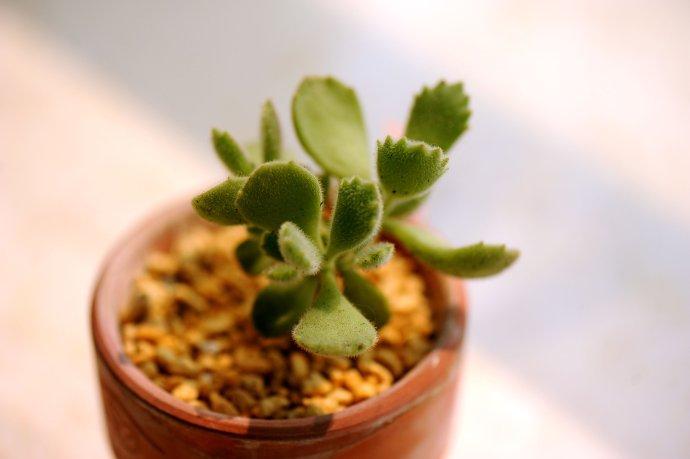
Like roses
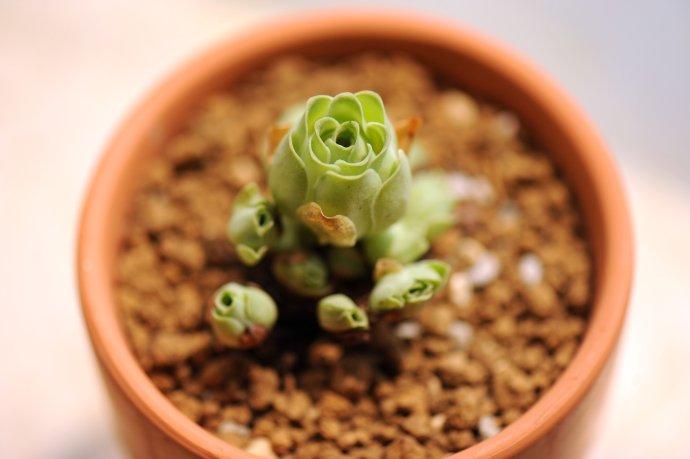
Lithops

Haworthia comptoniana
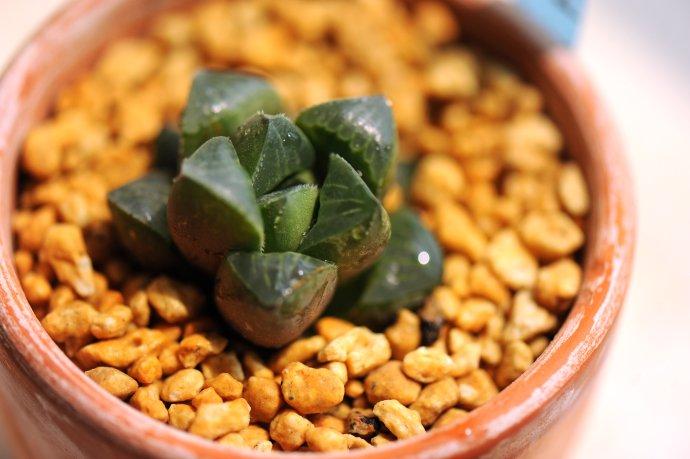
Conophytum,it's so cute

Crassula herrei H.-C.Friedrich

I have the most “meat” in the bedroom window, daylighting is good, ventilated, some like fleshy jade, meat cone fear exposure, will be kept in the dresser where astigmatism..
Do you like it ?

This one?

Like roses

Lithops

Haworthia comptoniana

Conophytum,it's so cute

Crassula herrei H.-C.Friedrich

20
9
Citibear23:Crass Uma Herrei H. So cute , like web feet .
Citibear23:The rosette is so cute . May I know it’s name ? Thank you .
sara gallego:that conophytum is so beautiful
Vuong Dang:how to grow Haworthia comptoniana from seeds
linpei:@sarajordan2993 thanks, beautiful girl ~
显示更多
求助
Ueca
2017年06月28日

What are these plants?
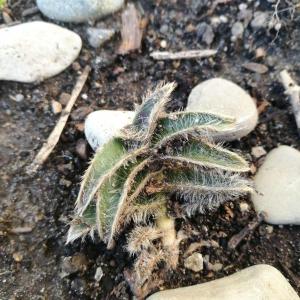

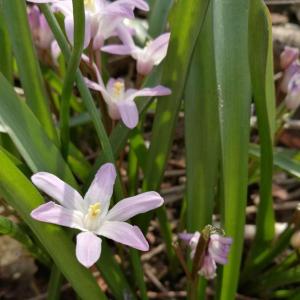



0
0
sunnyzou:#3 Zephyranthes grandiflora Lindl
Ueca:I have found #1 to be a type of Cyanotis and #2 to be Lychnis coronaria.
求助
Ueca
2017年06月17日

What are the species of these plants?






1
0
Ueca:I suspect that #3 is Sedum dasyphyllum.
Ueca:Thanks for letting me know. 👍 能鉴定植物吗?
熊蘇菲:缺水,水分蒸散太快建議遮網。
成长记
Elena Galkina
2017年06月17日

I've kept three plants of this sort. One is going to bloom, but unfortunately its middle is covered with rust. Lets see
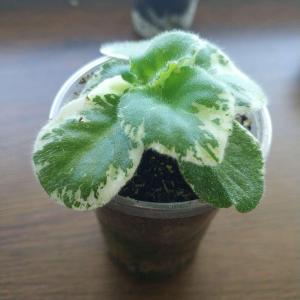

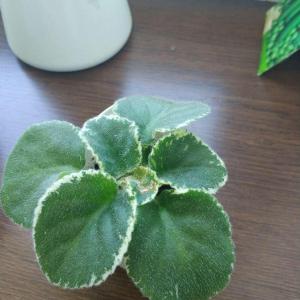
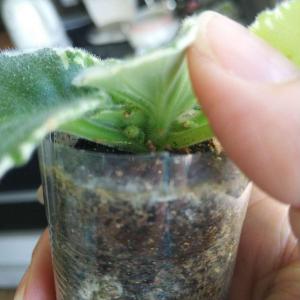




1
0
成长记
Elena Galkina
2017年06月17日

All light seeds died. Only dark seeds' plants survived and now they bloom with dark red flowers
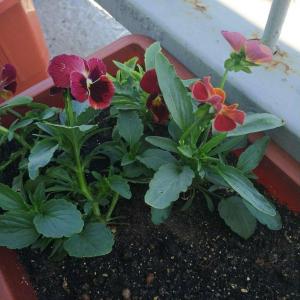

1
0
求助
Vic
2017年06月09日

Help my plants leaves are turn red and slightly shriveling before falling off. what does this mean and what can i do to help my plant.
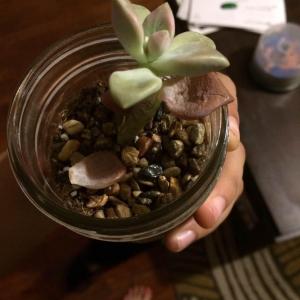

0
0
meriunkat:also I notice the pot is made of glass..if it has no holes underneath the water will sit there and overwhelm the plant
meriunkat:you can place the pebbles on top of the soil afterwards if you'd like, you can even place them under the soil to help the plant not take in too much water as well
meriunkat:you may want to consider placing the plant in cactus soil, it absorbs the water better than rocks or pebbles
Frajille:Too much water and not enough sun....Try some cactus/succulent food when you do water it.
Lucky Coyote:I think you may need to transplant it, water it maybe a little less, and give it a bit more sunshine



